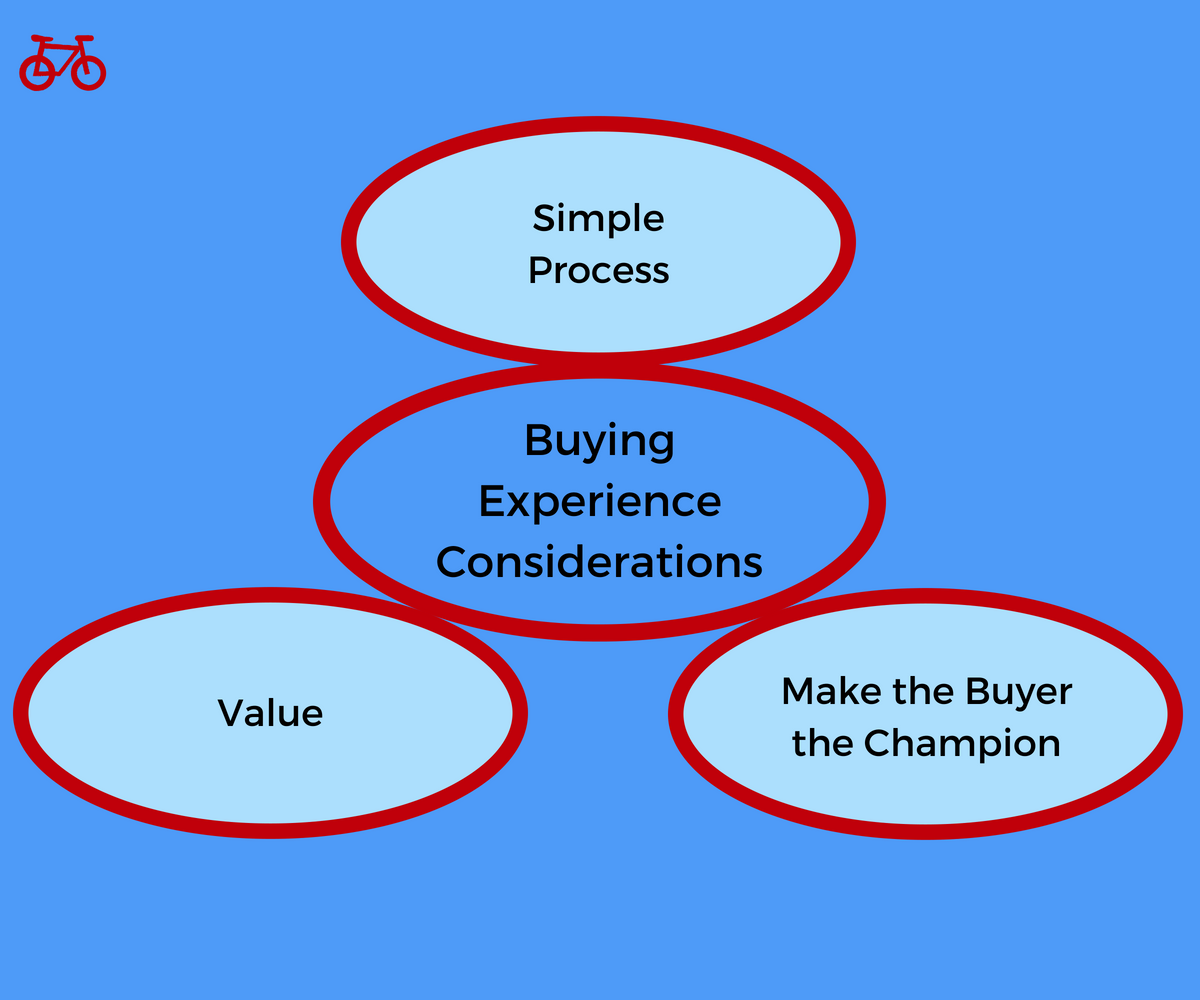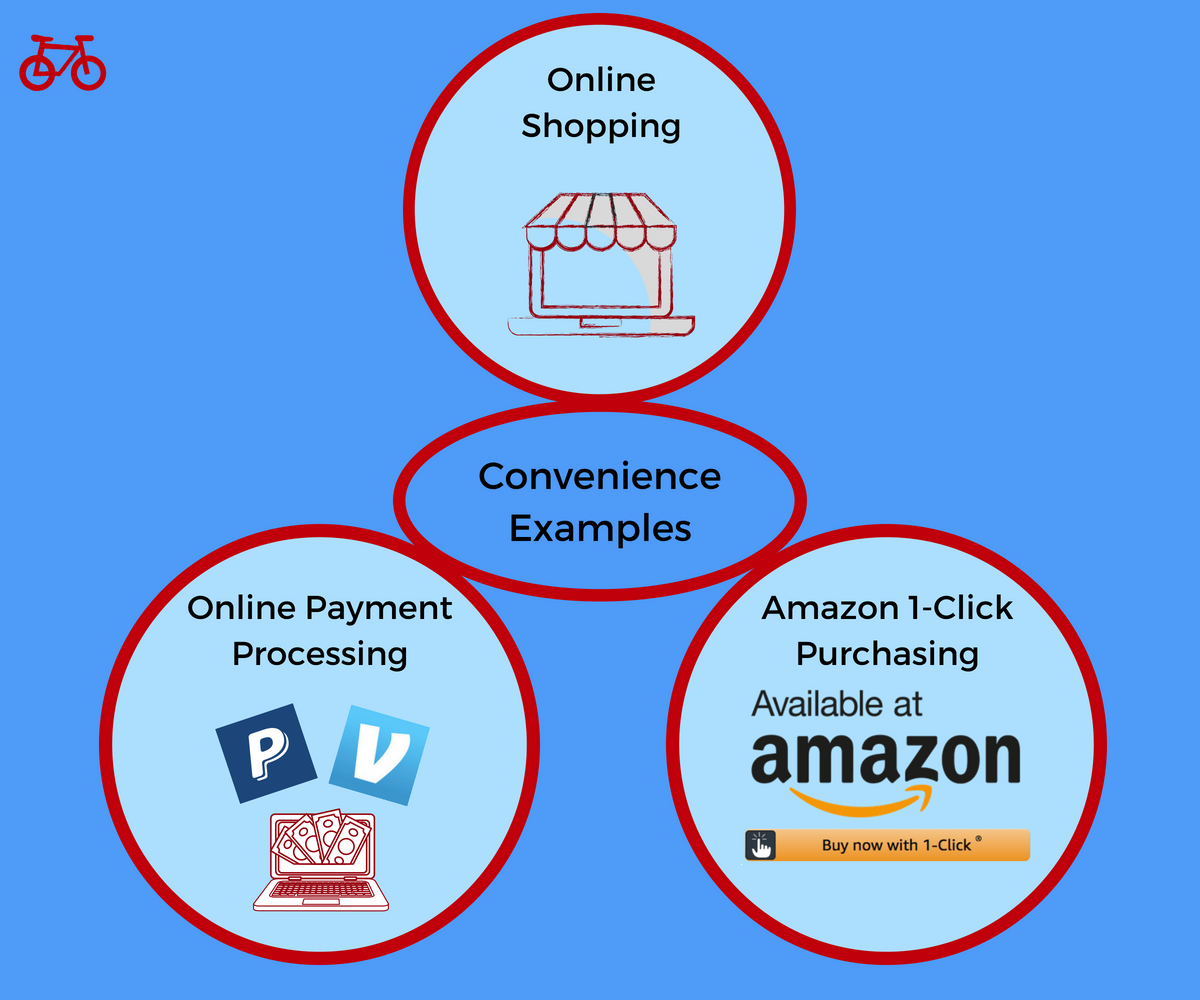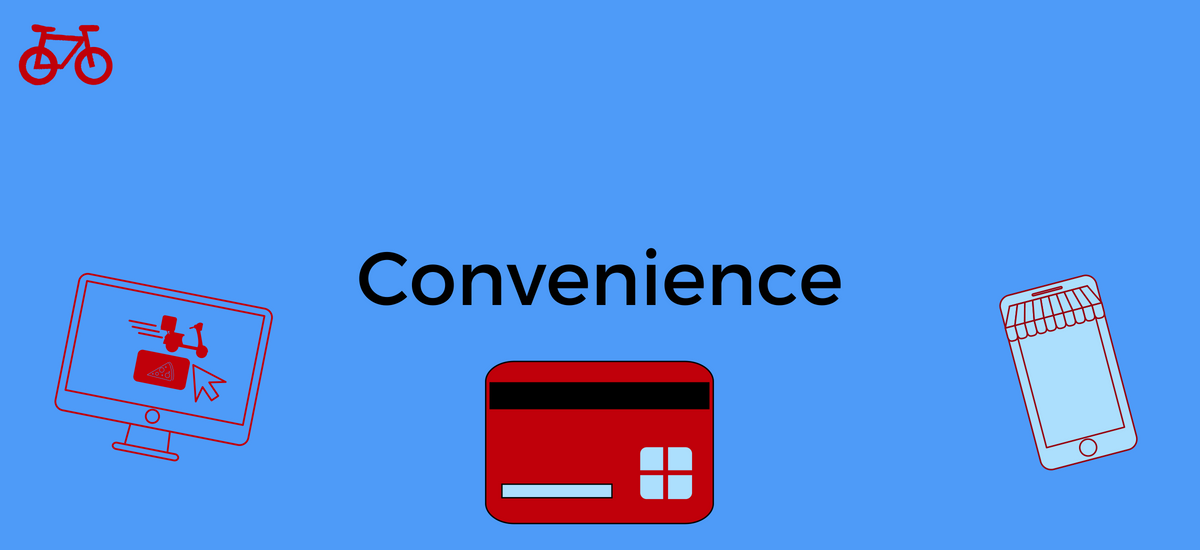Convenience is one of the components of the 4Cs marketing mix. Convenience is about how we address the buying process. Addressing it from the customers perspective.
It takes the traditional marketing mix concept of place and focuses making products convenient. This is a customer centric approach about placing our products in the most convenient place to be found, purchased, and used.
Here, we will address the convenience component of the marketing mix in detail.
What is Convenience?
Convenience, as a component of the 4Cs marketing mix, is how convenient it is for a customer to purchase, acquire, or use a company’s product.
Convenience addresses all aspects of the buying experience. That includes finding information about solutions to the customers need. Evaluating solutions and comparing them. And, the act of purchasing. Convenience is concerned with making each step as easy as possible.
Using convenience as a marketing mix component helps address, not only where a product is placed or its distribution, but allows us to address all aspects of making our products convenient for our customers to purchase.
In order to successfully apply convenience, we will need to look at consumer behavior, the buying process, and the buying experience. Thus, we will look at those concepts in detail below.
What is Consumer Behavior?
Consumer behavior is studying how consumers purchase and use products. This study incorporates looking at how consumers make decisions regarding the products they use, the purchasing processes they go through, and how they perceive the buying experience.
In looking at convenience, it is important to understand the behavior of the consumers we are looking to target. This will shape how we create a more convenient purchase experience. Thus, we need to look at the behavior of our customers in each stage of the buying process.
Understanding consumer behavior is at the foundation of building an effective convenience component of the marketing mix. We will us this as we look at the various aspects of convenience.
Convenience Considerations
As we apply convenience to our marketing mix strategy, there are various considerations. These considerations will help us create a more convenient purchase process. These are the barriers that consumers face when trying to purchase and use our products.
The following are some of the considerations we need to make regarding convenience.

Information
One of the first considerations we should make is the availability of information. This is information about our product, as well as the problems our products address.
In convenience, the customer is the center of our efforts. Thus, customers do not just want information about your product. Which, they do want that if they are interested. But, they also need general information about their problem and some of the possible solutions. Providing great information can be a nice way of branding.
We should consider the customer and ensure we have sufficient information about the problem our product solves. Then, also provide information about our products themselves.
Comparing
Inevitably customers are going to compare available solutions. So, we should make it convenient for customers to compare our solution with others. This is an extension of information, in that we are offering information to our customers so it is convenient for them to make the right purchase.
Offering comparison between the plans and products we offer, as well as comparing our products to competitors, is how we make it convenient for customers to compare.
Purchasing Barriers
Another consideration we should focus on is purchasing barriers. Whether this is the exchange of currency during the purchase or the interactions we have while purchasing, we need to make it convenient.
This can mean providing credit card processing, online currency exchange – like PayPal or Venmo – easy shipping options, or brick and mortar locations. Convenience is removing all the necessary barriers during the entire purchase process.
We want our customers to conveniently make the purchase, at any stage.
Online Sales
Incorporating online sales is one of the easiest ways to achieve convenience. If a purchase can be made online, this means a customer can make a purchase anywhere. And if the product is digital, they can access it anywhere. If the product is physical, then we need to make shipping simple and efficient.
Building an online shop is one of the simplest ways to address convenience in the purchase process and to instantly expand our business opportunities.
These are things we need to consider when looking at the convenience component of the marketing mix. This is not an exhaustive list of considerations. But, if we begin to address some of these fundamental concerns, we can begin to make the buying process more convenient for our customers.
What is the buying process?
The buying process is the process in which customers identify a problem, analyze and compare solutions to that problem, and purchase a good or service to solve that problem. The buying process is also concerned with the events after the purchase.
Simply put, the buying process is the actions that occur before, during, and after a purchase.
In looking at convenience, we need to understand this process as it relates to our products. Then, we can address all factors to make each stage of the buying process more convenient.
To address this, we will look at the various steps of the buying process.
How to Understand the Buying Process
To understand the buying process, we need to look at all the steps a buyer goes through on their journey to purchase a product. There are various stages before, after, and during the purchase. All of which need consideration.
Then, after we understand these stages, we can address each stage and apply ways to make them fit the convenience component of the marketing mix.
The following are the stages of the buying process.

Recognition
The first stage in the buying process is the recognition of a problem. Everything will follow from this stage.
The recognition stage is about recognizing there is a problem and the problem being such that a solution is needed. We can help our customers more conveniently recognize their problems. But to do this, we need to understand how they get to that stage.
Once this occurs, we can be in the place where the customer moves into the other stages.
Information
After a customer recognizes there is a problem, the next stage is the customer gathering information. Naturally, a customer will begin gathering information about solutions.
This process can occur with online research, which is one of the most common. Or, they can begin asking around their network. In either case, the customer is going to gather information to try and make an informed decision.
To apply convenience to this process means we will be in the position to conveniently provide quality information regarding the problems our customer is facing.
Evaluation
After gathering information, our customers will move into the evaluation stage. This is the stage where customers will evaluate the various solutions offered to their problem. This means that customers will be evaluating the various competitors with solutions to their problem. Also, they will evaluate the offerings within individual companies.
As customers evaluate, we need to make this process as easy and simple as possible.
Purchase
Now that customers understand they have a problem, they’ve gathered information, and evaluated their alternatives, it is time to make a purchase. This is the stage in which a customer has committed to purchasing a product.
The actual act of purchasing has many ways convenience can be applied. Through improvements in the checkout process to online payments, a more convenient process has a direct impact in sales.
Product Use
The buying process does not stop after the purchase stage. The process directly following the purchase is equally important. This is the stage where we educate the customer how to use our product and ensure they use it.
That means that we need to make our product easy to use. And, the learning curve to using our product needs to be convenient.
By understanding the stages of the buying process, we can make each stage more convenient, while also make the overall buying process and experience convenient. These are the stages that our customers will pass through. And keeping our customer at the center of our efforts, we can make each of these stages a better experience for our customers.
What is the Buying Experience?
The buying experience is the customers perception of the whole process they go through when purchasing our product. The experience a customer has when buying our product will be influenced by the elements of buyer’s psychology, the convenience of the buying process, and their previous buying experiences.
In regards to the buying experience, it is important to understand that this is an experience driven by the customers perception. Thus, perception is reality. It is the job of the convenience component of the marketing mix to make that perception one of convenience.
Buying Experience Considerations
As we address the many aspects of the convenience component of the marketing mix, we should consider a few things with regards to the overall buying experience. By considering the buying experience, we are putting ourselves in our customers shoes.
The buying experience is the customers perception of the buying process. Thus, to understand the buying experience we need to look at it from the customers perspective. The following are a few buying experience considerations.

Simple Process
The first consideration we should look at is if the buying process is simple. That is not whether we believe the buying process is simple. But, does the customer perceive the buying process to be simple. There is a big distinction there.
In addressing the buying experience, we need to ensure that our customers think about simplicity.
Value
Another consideration is whether or not we are delivering value at each stage of the buying process. This means that we are looking at each stage and determining what value, from a convenience factor, we can deliver.
In looking at the buying process, we have five opportunities to add value to a stage. Then, we have the overall process to also ensure we add value. This value is what is going to drive the perception of the buying experience.
Make the Buyer the Champion
Another consideration of the buying experience is whether we are making our buyer the champion. That means, when our customer makes the purchase of our product, do we give them the tools to look like the hero within their organization or to those who will be impacted by the product.
This is an important perception to enforce with the customer. This is making them look good in their choice of the product. Thus, they are the champion in their circle of reference, team, or organization.
The buying experience is about the perception our customers have about the buying process. There are many ways to impact that perception. Using the convenience component of the marketing mix is how we build that impact into our marketing strategy.
Examples of Convenience in the Buying Process
As we look at various areas of convenience and the buying process, it is helpful to see some examples of convenience. These are just a few ways we can make the buying process more convenient. And, some examples of companies helping us make the buying process more convenient.
The following are a few examples of convenience in the buying process.

Online Shopping
One of the most obvious ways to add convenience to our buying process is to incorporate online shopping. In a brick and mortar store, this is crucial. It ensures that we can sell our products anywhere our customers are located.
Also, we can conveniently serve them in the hours that are most convenient for them. This is a great example of ways to better incorporate convenience into our strategy.
Online Payment Processing
Payment processing can be a big purchasing barrier. Thus, using various payment processing methods can make the purchase of products more convenient.
Examples of these can be PayPal and Venmo. Which, allow customers to make online payments in person. And, this can make the online shopping check-out a simpler process.
This is just another way we can use tools to execute convenience in our marketing mix strategy.
Amazon 1-Click Purchasing
A great example of a company applying convenience in the purchase stage of the buying process is Amazon and their 1-Click Purchasing. Amazon makes checkout as simple as possible.
This removes more barriers from the purchase process. The more barriers that are removed from the buying process, the more convenient the customer experience.
These are a few examples of using convenience as a marketing mix strategy. There are more ways to add convenience and just as many considerations.
Now that we have looked at the convenience component of the marketing mix, we can begin to apply some of the principles to our marketing mix strategy. Although an important component, it needs to work in conjunction with the rest of the marketing mix.
Incorporating convenience in our marketing mix strategy can be another way to improve our marketing.
